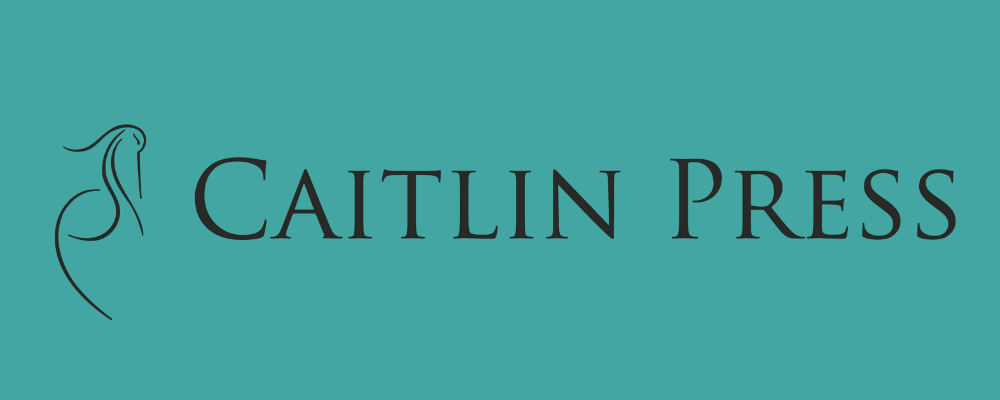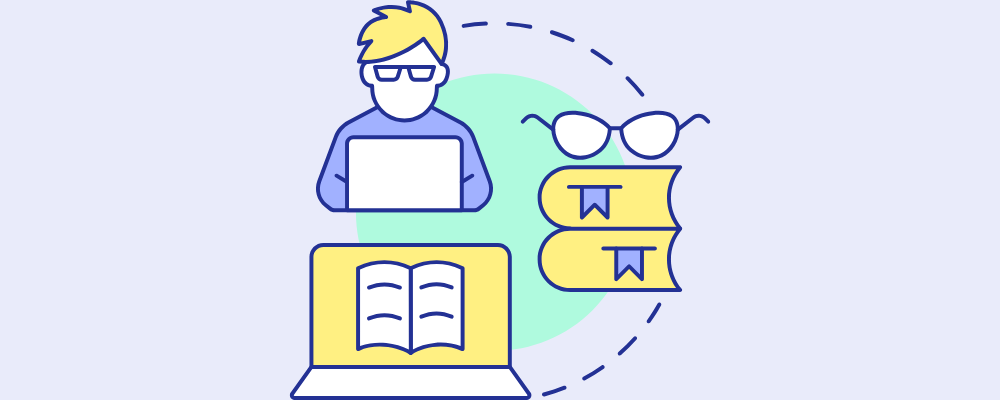This month, we invited Wendy Reid, the Accessibility and Publishing Standards Lead at Rakuten Kobo and the co-chair of the W3C (World Wide Web Consortium) Advisory Board to talk about the W3C, the EPUB Fixed Layout Accessibility document, and more.
(Scroll down for a transcript of the conversation.)
Want to make sure you never miss an episode of the podcast? You can subscribe for free on Spotify, iTunes, Pocket Casts, TuneIn, or SoundCloud.
Further reading/listening
Transcript
Adaobi Nnaobi: Welcome to the BookNet Canada podcast. I’m Adaobi Nnaobi, the Marketing & Research Associate and the host of this month’s episode. This episode, I have Wendy Reid with me. Wendy is the Accessibility and Publishing Standards Lead at Rakuten Kobo, a retailer, publisher, and reading system developer for ebooks and audiobooks. She is responsible for Kobo’s Accessibility and Standards work, where she mainly focuses on digital accessibility and standards for ebooks and audiobooks. She is one of the co-chairs of the Publishing Maintenance Working Group, editor of the Audiobooks recommendation, and co-chair of the W3C Advisory Board.
Hello, Wendy. Thanks for joining us. Can you tell us about what the W3C does and how they are relevant to the Canadian book industry?
Wendy Reid: I would love to answer that. So, the W3C is the World Wide Web Consortium. It is an organization that has been around for 30 years now. And their goal and their purpose is to standardize things for the web. So, everything related to, kind of, the user-facing side of the Internet. The web and the Internet often get confused for one another, but the web is that part of things that faces the user and the Internet is the pipes in the back. The W3C controls a number of different standards. Some are very well known. Many of them are not well known. But the ones that are the most relevant to the Canadian book industry are EPUB, the digital publishing standard for books. It also controls the audiobook standard for audiobooks. And then there's a lot of associated standards that we use in publishing like HTML, CSS, and kind of, ones that people don't realise we use a lot like JSON and things like that. But W3C is the organization at which companies come together and work on these standards. And so it's, kind of, a very nerdy part of the industry, but it's a very important place because that's where we get to make decisions on what's going to go into these formats and these underlying technologies that power the digital book world.
Adaobi: Great. I don't think I knew most of that, even though I go on the site all the time to check for stuff for EPUB things. But, yeah, that’s a comprehensive summary. So, let's focus on the EPUB Fixed Layout Accessibility document that was published quite recently and that you edited. It was published by the Publishing Maintenance Working Group as a group note. Can you give us some insight into what that means? My understanding is that it's not done yet.
Wendy: That's a fair assessment. Yeah. So, the EPUB Fixed Layout Accessibility document was published as a note. What that basically means, and this is the very technical nerdy part of the standards world that I think most people don't need to know about but I'll talk about it anyway, is that it's a non-normative document. And all that means is that the recommendations and the guidelines that are laid out in it don't have to be followed. They are not a must. They're just recommendations or suggestions. Now, does that mean that people shouldn't use it? I really hope people do use it. But just in terms of the parlance of how W3C operates with its documentation and stuff, it's not as official as EPUB, which is a recommendation document, which is the highest tier of document that W3C has. And that means it comes with a lot of extra stuff like, that we've tested it and gotten confirmation of its use by implementers or aka companies that use EPUB. So, reading systems, publishers, people like that.
We don't have that same information for the EPUB Fixed Layout Accessibility note. We don't need to, and it's more of an informal document right now. It might one day get to that level of being, kind of, a full recommendation similar to EPUB accessibility but it's not there yet. And it's definitely not the final iteration because we wanted to get this first, kind of, round out there so people had an idea of how to do things for a fixed layout accessibility. But there's a lot of unknowns. There's a lot of things that we think reading systems might want to try or experiment with that we suggested but couldn't really talk about because they weren't features yet. And we're hoping that, as some of that evolution happens, we can actually update the document to have more information for publishers and content creators around things that you can do that reading systems and other platforms will be able to support in your fixed layout books.
Adaobi: Okay. So, just for clarification, should publishing professionals wait for the finalized documentation or should they start looking at this document now?
Wendy: They should absolutely start looking at this now. The bulk of the document, most of the recommendations in it are based on longstanding principles from the Web Content Accessibility Guidelines (WCAG) from people in the industry that have been building accessible ebooks and doing this work already. Like, 90% of the document is stuff that is not going to change. It is how you make accessible content. There's just a small, I would say, like 10% of the document that's a little bit up in the air. But we're also very clear in the document about parts where it's like, "This may not be working yet or this isn't official yet," versus, "Nope, this is how you do this specific type of thing,” like alt text or tables.
Adaobi: So, a lot of us know that fixed layout EPUBs can be challenging to make accessible. There are common guidelines for reflowable EPUBs that definitely won't work for fixed layout. So, how did the Publishing Maintenance Working Group navigate that when creating this document?
Wendy: Part of it is just being really, really, really honest. I think we agonized for a long time particularly about a section that we called the ‘Limitations of Fixed Layout EPUBs’. The reality with fixed layout content is that it can't do all the things that reflowable can. It's not as accessible as reflowable is. However, there are very, very good reasons why you might want to make a book in fixed layout. There's content types and formats of books that only work in fixed layout. So, we had to, kind of, toe that line to say, "Recognizing that this content has to be in this format, what can you do to make it as accessible as possible? Here's the recommendations that we have for you." A lot of the common ones are really around reflowability. So, being able to reflow the text, you can't do that in fixed layout. Magnification, so being able to increase the size. You can increase the size of a page in fixed layout, but you can't increase the size of text on its own. You can only do the whole image, which can definitely create some less than optimal reading experiences for people. And so we were very honest about that because we know that that's just the limitation of things right now. That's actually where a lot of our future-looking ideas come from. It's like, how can we possibly make that experience better? Unfortunately, it's going to take a lot of work on the reading system and display side, more so than the publisher side to make it happen. But there are challenges with fixed layout. It's never going to be fully accessible as it currently is, but we can make it way more accessible than the current standard.
Adaobi: All right. So, let's dig a little bit deeper into this document. So, when it comes to things like reading order, specifically spreads in a picture book, where the publisher intends the reader to read from page to page, like across the two pages, how do you make that accessible?
Wendy: So, this is one area. So, if people have the document open, you're looking at section 2.2.3, a.k.a., reading order across the 'fold’. But our main recommendation for this is to make sure when you're designing the content, especially when it is in a two-page spread type format, that you're not putting users in a position where they have to bounce between the sides of the spread. So, you want to at least try to avoid paragraph 1 on the left side, paragraph 2 is on the right side and forcing that, kind of, back-and-forth type reading because it can be really difficult for users. And it really doesn't work well in the way that fixed layout EPUBs are rendered currently. So, try to avoid that if you can. And if you can't, one of the other ways might be to convert a two-page spread into a single spread and override your spine settings to make that single spread, kind of, cross over. There are issues with that as well and more platform-related than functionally. But definitely, a common theme, I think, through the whole document is getting publishers to really be thoughtful about the construction and the assembly of their content. And thinking, if not digital first, digital specific in design and the experience. One thing I like to remind publishers about particularly with ebooks, both reflow and fixed layout, is that they're probably not reading it on a laptop. They might be. We do have a lot of people reading books on laptops, but it's just as likely someone is reading this book on their phone. And a two-page spread on your phone, not a great experience.
Adaobi: So, this is a bit of a broader question, but what can reading systems implement to help fixed layout EPUBs be accessible?
Wendy: Oh, man, so many things.
Adaobi: Big question.
Wendy: Big question, especially for someone who works at a reading system developer. A lot of it is the basics of accessibility, right? Ensuring that your reading system is compatible with all of the assistive technologies for your platform. So, that's the screen reader that might be built into the operating system of the platform that you're on, be that web or mobile or anything like that. Having features like the ability to change the magnification or size of your interface. I think a lot of stuff for reading systems, it's not just about the content, but it's also about the interface that gets you into the content. So, if it's your app, it's your login pages, it's your library bookshelf type pages, it's the settings, bars, and menu options around the reading experience. Those have to be accessible. You need to make them work with screen readers. You need to make them work with magnification or screen size adjustments, voice control, things like that.
Reading systems also need to be ensured that not only that surrounding part is compatible with assistive technology, but they're ensuring that the content is as well. Especially for fixed layout, it's not sufficient to just show the content. And a lot of reading systems over the years have done this, kind of, fallback to images approach. We can't do that anymore. We need to be able to expose the XHTML underlying content to assistive technology so that screen readers work, text-to-speech works, things like that. Otherwise, people can't read the content. Even if the rest of your app is really, really accessible, you really need to make sure that just as much as the interface is accessible, that the content itself is being exposed to the user as well.
Adaobi: In the document, there's also information on media overlays in fixed layout. Can you tell us the difference between a media overlay, text-to-speech, and an audiobook? I feel like I'm always, kind of, getting them confused a little bit.
Wendy: This is like the thing I like talking about the most. The differences. So, media overlays and the reason we talk about it in the document, media overlays are technically a feature of both reflowable and fixed layout EPUBs. We most often see them in fixed layout. I think that's mostly because they're really popular with kids' content and stuff like that. What makes them different and makes them unique is that media overlays are actually part of the EPUB. When publishers create their books, they are building media overlays themselves. It's the publisher that is providing the audio files with the readback from the book. They are providing the files that link the audio position and the text position so that the reading system can actually do the highlighting and all of those features with media overlays. And it's part of the book. It's part of the EPUB. The reading system displays it, but it's all the responsibility of the publisher to provide those overlays. Without them, reading systems can't do anything.
Text-to-speech, on the other hand, is a reading system feature. And text-to-speech is built into the reading system. And what text-to-speech engines do is that they look at the content, try and pull out the text if there's text available, and then turn that text into speech. A lot of text-to-speech engines have options for different voices, or speeds, or different adjustments that you can make to customize it for your needs. Text-to-speech tends to fall into more of a robotic, computer-y voice type situation. It's not customized to the book, unlike media overlays, which are often read by human narrators and have very high quality. And, you know, we might have a narrator that, especially for kids' content, whispers when the character whispers or yells when the character yells and you get a really immersive experience. Text-to-speech is more of an information intake, kind of, experience. I just want to hear what's on the page. Text-to-speech can also do some of that highlighting, but it really depends on how the reading system has implemented it.
And then audiobooks, on the flip side, we go back to the publisher. And audiobooks are audio-only. There is no text. Most of the time when audiobooks are delivered these days, it's delivered as an MP3 or a list of MP3s. There's no associated text with the files. Audiobooks are mostly human-narrated, though obviously we are seeing a rise in AI-narrated audiobooks coming onto the market. But audiobooks are also in the realm of publishers. They provide the files. They do the production of those files and reading systems just do playback.
Adaobi: So, like, an example of a media overlay would be like in a children's book, an audio narration that was already done by the publisher where they've hired people to narrate that and do all of any other sound stuff associated with that.
Wendy: Yeah, absolutely. It's much more integrated into the book. It's very similar to audiobooks, to be honest, and especially similar to the back-end stuff. You need someone to come in, do a recording of the text. It's almost always a professional narrator. Media overlays will also sometimes have things like background music or sound effects, especially if the book has a lot of interactivity in it. But obviously, the big difference is that it's linked to the text. And it's actually linked at basically the word level. So, you can actually control the media overlay and watch it. It reads each word one by one. You see the highlight go along. And I think we see it most often in kids' books because it's a really great way for young readers to learn to see the word, hear the word, and repeat it. But it's not that dissimilar from audiobooks. There's just probably for the publisher a little bit more work, especially in that matching, you know, audio timestamps to word positions.
Adaobi: I was wondering ... So, with something like media overlay or audio narration, would this be able to be accessible on every or most reading systems?
Wendy: Media overlays are a pretty common feature. I don't think every single reading system has them, but it's been a long-standing feature and a pretty common feature, especially I would say amongst the major platforms, like the bigger ones, absolutely. Maybe less common among smaller platforms because it's not the easiest thing to implement. But it's definitely common enough that most places you go, you can probably ... if you have a book with media overlays, you should be able to play it.
Adaobi: I have one more random thought. So, sometimes when I'm reading something on like my tablet or something, usually like the Kindle app, and let's say I'm reading a comic book/graphic novel. So, sometimes I can zoom into each panel and it'll zoom to just that panel instead of just zooming the page, I guess. What is that?
Wendy: I can't speak directly to Kindle's implementation of this. I have a feeling I know how they've done it, but I don't work there. I don't know. There are and there have been actually for years within the publishing space and in the standard space, we had this old, long-standing specification called region-based navigation that tried to capture this experience. And the idea behind that would basically be to provide metadata within the ebook file to the reading system to say, "Panel one is at this location, panel two is at this location, panel three is ..." you know, so on and so forth. And so the reading system could do that, you know, bounce back and forth. That standard I think is possibly a decade, if not more older. And today we probably actually have even easier ways to do it. Some of it is just, you know, panels in comics are pretty predictable. And so I've seen applications that, instead of trying to detect the panels, they just, kind of, pop up to the logical first reading position of that page and then just, kind of, move across naturally, which mimics it, but depending on the comic, it may not be perfect. I'm imagining Kindle's probably using something similar to region-based navigation with some sort of panel detection where they're saying like, "Here's a location, here's a location, here's a location, here's a location." But I mean, now we have things like computer vision and stuff that could probably, more quickly than a human, go through, detect the rough shape of panels and do some of that itself. I haven't seen that in action yet, but it's definitely ... the technology has actually evolved, that it's probably going to get easier to do it for comics in the future as well.
Adaobi: That's really cool. I've always wondered what that was. Okay, so back to the document. I noticed in the document that there is an accompanying technique document also in the works. What can we expect from that?
Wendy: So, the techniques document, which we have to start working on again very soon, the goal of that document is really just to provide some suggestions for how to do some of the things that we recommend. When we were initially building the document, every once in a while, we would come up with, like, code samples or little samples of how to do certain things. And we realized in the initial pass that the document was getting kind of big and unwieldy and our audience may not necessarily care about that technical stuff. They may just want to know the concept. So, we thought, okay, let's separate it so that we have the technical stuff in one document and the theory in the main document. So, that's the plan for the techniques document is to actually give for a recommendation some suggestions of how to actually do that with, like, in your ebook with HTML or SVG or anything like that.
Adaobi: I was wondering, because you mentioned before how it doesn't necessarily have to be accessibility-first when it comes to design but accessibility-forward. And I was wondering, so when it comes to not just design but accessibility workflow, and when we know that the final product would most likely be a fixed layout EPUB, so things like picture books, cookbooks, like where it's like obvious that's what it's going to be. Do you have any tips on workflow and how you can, kind of, make this process easier for publishers?
Wendy: Yeah. I mean, I think the very first thing is, thinking about your book as a digital product, and thinking about the ways that people might read it when it's a digital product. You know, so I think I gave the example before of, you know, reading it on your phone. So, you know, I definitely don't think publishers should design their books just for the phone experience, but they should consider it and keep it in mind that someone might be reading their content on screen as small as, you know, five inches.
When they're designing their books and when they're thinking about the workflow, thinking about readability, which sounds like a very obvious thing to be telling publishing professionals, like make your books readable. But I've definitely seen things in print publishing, in digital publishing, where people have gotten really, really creative with layout and things like that, oftentimes to the detriment of the reading experience. So, you know, keeping in mind things like heading structures and the layout of the page and where information is put. Does it follow like a logical flow? Is it easy for people to follow? Do I have to jump around a lot to be able to get all of the content on a page or is it comfortable to read? These are all things I think most people in publishing are probably thinking about, maybe not explicitly, but they're doing it as part of their processes. But that's, I think, really important when you're thinking about accessibility in your design.
The other thing is, of course, like, as you're building your books, steering away from defaulting to an image-based fixed layout format, instead of using text. A lot of what makes accessibility work in fixed layout content is making the content available in text. So, I've seen it a lot in publishing where people say, "Well, it's so difficult to get all this layout formatting in HTML and CSS. I'm just going to make this an image. I'm just going to export these pages as images, and I'm not going to bother with the text.” That unfortunately makes the book completely inaccessible and unusable for many, many people. So, as much work as it is, as you're doing that layout stuff, as you are building your ebooks, keep the text, keep it. Export it as XHTML and using CSS, avoid the urge to simplify and just use images because it's going to make the content more durable long-term and you're going to have a much bigger audience of people who can actually enjoy and consume your content if you do that.
Adaobi: Thank you. I'm sure it will be helpful for many people. It's great to hear about the steps towards creating accessibility standards for fixed layout EPUBs. I think it's something people working in accessibility have been looking forward to for a while now. What else is on the horizon for the W3C in regards to digital publishing?
Wendy: What isn't there? There's a lot. The thing that's probably coming up the soonest and is probably the most interest to most publishers around the world right now is our work around EAA, as particularly the display of accessibility metadata. There's a document that should ... I don't know what the date is, but it should be coming out very soon around the user experience guidelines for display of accessibility metadata. Those documents are also going to include guidance for both metadata in the EPUB but also metadata in ONIX, which I know for many publishers is always a challenge. So, that's coming very soon and I think will be a huge benefit to everyone and answer a lot of questions that I get every time I do something like this.
Outside of that, we are working on the techniques document, which I think is going to be a huge help to the fixed layout document overall. We are probably going to do some improvements or changes to EPUB over time, nothing scary before someone hears this and panics, but just evolving EPUB to accommodate more formats and take more things into consideration in terms of display and content types. EPUB is meant to be for everything, but sometimes you have to do work to make that happen. And audiobooks, there's definitely a lot of attention and interest in what defines accessible audiobooks. We haven't really gotten anything started quite yet, but I know there's work happening and research happening in other places that will probably feed into W3C eventually so that we can write that documentation for audiobooks and audio format. So, keep an eye. And if anyone's ever curious or wants to get involved or has ideas, they're welcome to reach out to me or look us up online. We love people. We love new people and we love getting participation from the community because it's very helpful.
Adaobi: Thank you. That was a lot to take in and process, but I think you've shared some very valuable information today. So, thank you for joining us.
Wendy: Thank you for having me.
Adaobi: I’d like to acknowledge that BookNet Canada's operations are remote and our colleagues contribute their work from the traditional territories of the Mississaugas of the Credit, the Anishinaabe, the Haudenosaunee, the Wyandot, the Mi’kmaq, the Ojibwa of Fort William First Nation, the Three Fires Confederacy of First Nations (which includes the Ojibwa, the Odawa, and the Potawatomie), and the Métis, the original nations and peoples of the lands we now call Beeton, Brampton, Guelph, Halifax, Thunder Bay, Toronto, Vaughan, and Windsor. We encourage you to visit the native-land.ca website to learn more about the peoples whose land you are listening from today. Moreover, BookNet Canada endorses the Calls to Action from the Truth and Reconciliation Commission of Canada and supports an ongoing shift from gatekeeping to spacemaking in the book industry.
We'd also like to acknowledge the Government of Canada for their financial support through the Canada Book Fund. And thanks to you for listening.














Insights into the latest updates and additions made to ONIX codelists.